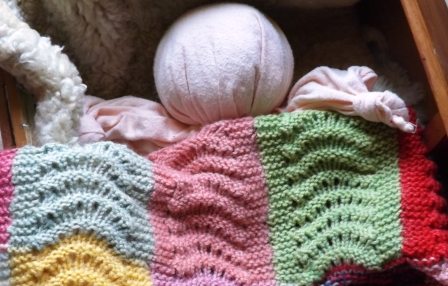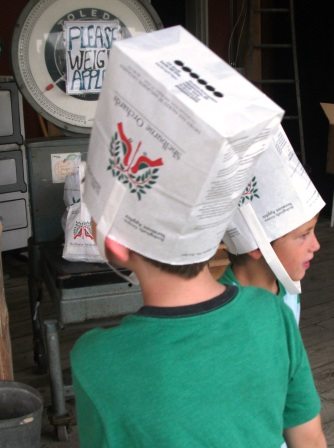Anyone who spends time with children soon comes to recognize that the child’s most basic needs take precedence over everything else in the course of a day. The needs of children are very simple and very basic. When these basic needs are not met, they take over the child and instead of joyful play and the chatter and clamor of a happy engaged child, we see frustration and irritability that often manifest in explosive and impulsive behavior that we ordinarily do not see in the same child when that child has had opportunities for movement and play and is rested and fed.
Some needs are pressing, like the need for a fresh diaper. If we do not tend to a wet or full diaper, the child’s skin may be irritated and the child may get a painful rash. When we don’t feed a hungry child, the child melts down. We all know how difficult it is for a tired child to get through the day.
Let’s look at a typical bare bones daily rhythm for a small child. They are Eat, Sleep, Play and Love. These ingredients form the elixir for a sound and joyful day with small children.
Typical bare bones rhythm:
Rise from sleep
Change diaper, dress, comb hair and brush teeth
Play
Eat breakfast
Play
Eat snack
Play inside and help with household chores
Eat lunch
Sleep at naptime
Wash up, change diaper
Play
Eat dinner
Play
Bedtime and sleep
Sounds pretty simple, eh? When we cut out all the running around and appointments and classes and errands, we find a full and rich structure on which to hang our day.
We eat, care for the body, play and sleep. That is what we do with a child in the course of a day. We find the love in how we approach the child and the tasks.
Here are some questions to take in as a meditation, not meant to answer, or to be right nor wrong, just to ponder.
 Eat
Eat
How do we approach food? Is it something pleasant? Do we grow some of it ourselves or know our local farmers? Do we visit them? Do we have regular mealtimes? Do we prepare the food together with our child? What are we feeling when we prepare food? (Have you seen the movie Like Water for Chocolate? Remember the onion scene?) Where do we eat? Do we make meals and teatime special with flowers on the table and cloth napkins? Do we all sit down together and begin with a blessing? Do we light a candle at mealtime? How do we bring tea and meals to a close? What is the form we bring to eating?
Sleep
Is bedtime regular? What does the room where the child sleeps look like? Is it dark and quiet and free of clutter and stimulation? Is there a bedtime routine? Does the child have a regular nap or rest each afternoon?
Play
Every child is imbued with the impulse to play. Does the child have enough time in the day for free, uninterrupted self initiated play? Do the adults in the child’s world recognize the importance of time and space for free play? Is there too much stuff in the way of play? What messages do the child’s toys convey? Does the child spend a good part of each day out of doors in free play? Are the adults constantly interrupting the child’s play?
Love
A secure relationship with an adult is the basis for the well being of the child. The child is born into a symbiotic relationship with the mother that forms the basis for all relationships that will come in the life if the child as well as the child’s sense of well being in the world. This relationship forms the foundation for trust and for the child’s ability to play. This is why it is so important for the child to have a consistent caregiver throughout early childhood.
These bare bones are solid ones that support the parent or caregiver’s ability to bring rhythm and to step back and see, hear and feel the child. This forms the basis for a secure and loving relationship with the child that the child will carry into the world. This is the most important element of all and the most difficult one to define or describe. It is this rhythm and love, which imbues our days with grace and joy in caring for children, that gives us satisfaction, gives the relationship a sparkle and gives the child security in knowing that the world is good, beautiful and true.
The LifeWays approach to The Living Arts embraces these most basic needs of the child with The Domestic Arts, The Nurturing Arts, the Creative Arts and The Social Arts emphasis, and brings the how as the essence of caring for children.
Lisa Boisvert Mackenzie is a mom to boys and an early childhood teacher, as well as the editor of The Wonder of Childhood online magazine. She blogs at Celebrate the Rhythm of Life.
We thank you for stopping by to enjoy this article. If you would like to share your experiences working with children in a LifeWays home or center, please feel free to contact Mara Spiropoulos at linearmara@gmail.com. She would be thrilled to work with you to share your wisdom and experiences on the LifeWays blog.
